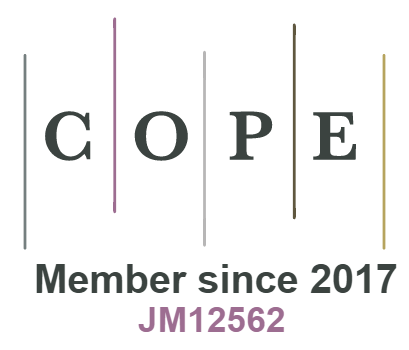The Nature of Naked Singularity in Cosmology
DOI:
https://doi.org/10.18034/ei.v5i1.174Keywords:
Cosmic censor, Einstein equation, gravitational focusing, naked singularity, Vaidya regionAbstract
This paper discusses aspects of a naked singularity. If a star has exhausted its nuclear fuel, and it exceeds Chandrasekhar limit then it must undergo gravitational collapse and ultimately it forms black hole. A black hole is a space from where no massive particle or no signal comes to the external observer. As a result space-time singularity is formed; this must be hidden behind the black hole region which is called the cosmic censorship hypothesis, first proposed by Roger Penrose, which cloths the singularity to remain invisible to the external observers. It has not been possible, to obtain a proof despite many attempts to establish the validity of cosmic censorship and it remains an open problem. Hence, general relativity supports that naked singularity may be formed. A naked singularity implies that singularity is visible to an external observer. Sometimes it is not visible to the external observers, but it could be observable to the interior observers of the black hole region. This type of singularity is called local naked singularity.
Downloads
References
Christodoulou, D. (1999), Ann. Math. 149, 183.
Clarke, C.J.S. (1993), An Analysis of Space-time Singularities, Cambridge University Press, Cambridge.
Deshingkar, S.S. (2010), On Physical Insignificance of Null Naked Singularities, arXiv:1012.3090v1 [gr-qc] 14 Dec 2010.
Dwevedi, I.H. and Joshi, P.S. (1989), On the Nature of Naked Singularities in Vaidya Space-time, Class. Quantum Grav., 6:1599.
Dwevedi, I.H. and Joshi, P.S. (1991), On the Nature of Naked Singularities in Vaidya Space-time II, Class. Quantum Grav., 8:1339.
Harada, T. (2004), Pramana, Proc. ICGC-2004 63, 741.
Harada, T.; Iguchi, H.; and Nakao, K.-I. (2002), Physical Processes in Naked Singularity Formation, Progress of Theoretical Physics, 107(3): 449– 524.
Hawking, S.W. and Ellis, G.F.R. (1973), The Large Scale Structure of Space-time, Cambridge University Press, Cambridge.
Hiscock, W.A.; Williums, L.G. and Eardeley, D.M. (1982), Creation of Particles by Self- focusing Singularities, Phys, Rev. D., 26: 751.
Joshi, P.S. (1996), Global Aspects in Gravitation and Cosmology, 2nd Ed., Clarendon Press, Oxford.
Joshi, P.S. (2013), Spacetime Singularities, arXiv:1311.0449v1 [gr-qc] 3 Nov 2013.
Kr´olak, A. (1999), Nature of Singularities in Gravitational Collapse, Progress of Theoretical Physics Supplement No. 136.
Kruskal, M.D. (1960), Maximal Extension of Schwarzschild Metric, Physical Review, 119(5): 1743–1745.
Kurada, Y. (1984), Naked Singularities in Vaidya Space-times, Prog. Theor. Phys., 72: 63.
Mkenyeleye, M.D.; Goswami, R. and Maharaj, S.D. (2014), Gravitational Collapse of Generalised Vaidya Spacetime, arXiv:1407.4309v2 [gr-qc] 29 Sep 2014.
Mohajan, H. (2015). Basic Concepts of Differential Geometry and Fibre Bundles. ABC Journal of Advanced Research, 4(1), 57-74. Retrieved from http://i-proclaim.my/archive/index.php/abcjar/article/view/200
Mohajan, H. (2015). Generalization of Euler and Ramanujan’s Partition Function. Asian Journal Of Applied Science And Engineering, 4(3), 167-190. Retrieved from http://journals.abc.us.org/index.php/ajase/article/view/681
Mohajan, H. (2016). Singularities in Global Hyperbolic Space-time Manifold. Asian Journal Of Applied Science And Engineering, 5(1), 41-58. Retrieved from http://journals.abc.us.org/index.php/ajase/article/view/815
Mohajan, H. (2017). Tacit Knowledge for the Development of Organizations. ABC Journal of Advanced Research, 6(1), 17-24. Retrieved from http://i-proclaim.my/archive/index.php/abcjar/article/view/263
Mohajan, H.K. (2013a), Singularity Theorems in General Relativity, M. Phil. Dissertation, Lambert Academic Publishing, Germany.
Mohajan, H.K. (2013b), Friedmann, Robertson-Walker (FRW) Models in Cosmology, Journal of Environmental Treatment Techniques, 1(3): 158–164.
Mohajan, H.K. (2013c). Schwarzschild Geometry from Exact Solution of Einstein Equation, Journal of Environmental Treatment Techniques, 1(2): 69–75.
Mohajan, H.K. (2014a), Upper Limit of the Age of the Universe with Cosmological Constant, International Journal of Reciprocal Symmetry & Theoretical Physics, 1(1): 43–68.
Mohajan, H.K. (2014b), Gravitational Collapse of a Massive Star and Black Hole Formation, International Journal of Reciprocal Symmetry & Theoretical Physics, 1(2): 125–140.
Papapetrou, A. (1985), Formation of a Singularity and Causality in a Random Walk in Relativity and Cosmology (Eds. N. Dadhich; J. K. Rao; J. V. Narlikar and C. V. Vishveshwara) Wiley Eastern, New Delhi.
Penrose, R. (1969), Riv. Nuovo Cim. 1, 252.
Singh, T.P. (1997), Singularities and Cosmic Censorship, J. Astrophys. Astr., 18: 335–338.
Szekeres, G. (1960), On the Singularities of a Riemannian Manifold, Publicationes Mathematicae, Debrecen. 7: 285–301.
Vaidya, P.C. (1943), The External Field of a Radiating Star in General Relativity, Curr. Sci. 12: 183.
Vaidya, P.C. (1951), The Gravitational Field of a Rotating Star, Proc. Of the Indian Acad. Sci. A33: 264.
Witten, E. (1992), hep-th/9206069.
--0--
Published
Issue
Section
License
Engineering International is an Open Access journal. Authors who publish with this journal agree to the following terms:
- Authors retain copyright and grant the journal the right of first publication with the work simultaneously licensed under a CC BY-NC 4.0 International License that allows others to share the work with an acknowledgment of the work's authorship and initial publication in this journal.
- Authors are able to enter into separate, additional contractual arrangements for the non-exclusive distribution of the journal's published version of their work (e.g., post it to an institutional repository or publish it in a book), with an acknowledgment of its initial publication in this journal. We require authors to inform us of any instances of re-publication.









